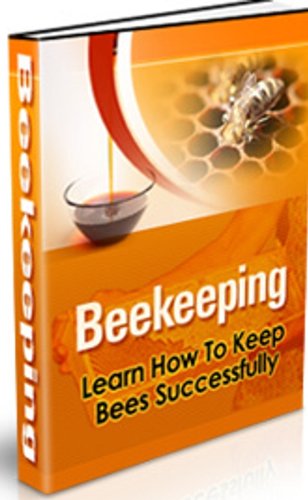 When browsing the new releases at Amazon, I ran across this one for the Kindle: Beekeeping - Learn How to Keep Bees Successfully ($4.95). Unfortunately, this is one of those free books that keeps being posted around the internet as if it were written by the person posting it and with a misleading picture that implies it is a large hardback book, being distributed in ebook form.. This posting bmakes what looks like it's eleventh appearance in the Kindle store
When browsing the new releases at Amazon, I ran across this one for the Kindle: Beekeeping - Learn How to Keep Bees Successfully ($4.95). Unfortunately, this is one of those free books that keeps being posted around the internet as if it were written by the person posting it and with a misleading picture that implies it is a large hardback book, being distributed in ebook form.. This posting bmakes what looks like it's eleventh appearance in the Kindle storeBook Description
Here's everything and more that you'll learn with this 45 page guide:
Getting Started in Beekeeping
Clothing and Equipment Needed
How to Handle Bees
Acquiring Bees
Queen Management Techniques
Raising Queen Bees
Using Nectar and Pollen Substitutes
Keeping Bees in a Suburban Area
About Bacterial, Viruses and Fungal Diseases
About Varroa Mites and Tracheal Mites
The Small Hive Beetle
About Nosema
About the Disappearing Bees
Bee Stings and how to avoid them!
The Processing of Honey and the Equipment used for Honey Processing
Resources and References
I don't know about you, but that seems pretty ambitious for a 45 page book, even if this weren't a freebie being passed off as a comprehensive guide. If you want to pick it up in the Kindle store, be sure to check the formatting carefully. I'd be prepared to send an email off to Amazon Customer Service, as well, asking for a refund -- there are many more books out there on beekeeping that are both more comprehensive and written by true experts in either honeybee research or beekeeping, for not a lot more money (especially if calculated on a per-page cost).
If you are new to beekeeping, though, or looking for an overview suitable (perhaps; I haven't read this one in detail) as an introduction for in a homeschool curriculum, you can do a google search on the pamphlet's title and download from one of the many sites offering a free DOC or PDF copy, such as this one HERE (this one is a DOC file and their signup also gives you 56 more "books" on gardening, which are similar introductory pamphlets). However, I would recommend that you not provide any of these sites with your real name and email address -- use a throw-away account (used for signing up for this type of thing and abandoned after a few months) or a mailinator.com address instead.